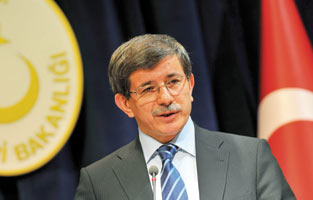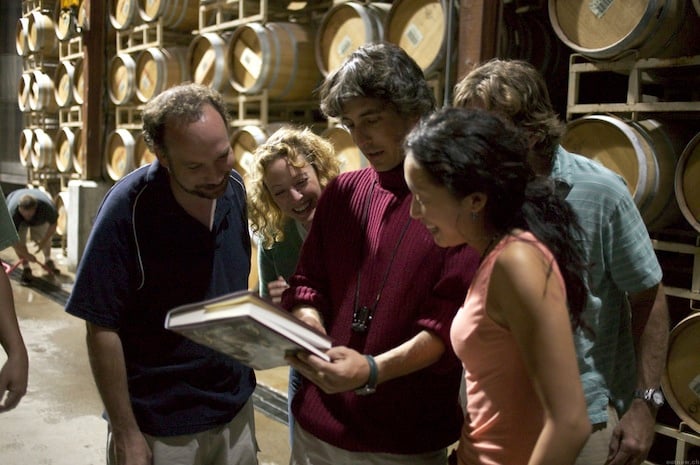
After this observation was made, Mr. Othonas and Mr. Dollis found a solution that was under way to issue ID cards, a less time-consuming procedure, as it requires less documents. The proposal was also submitted by Greek Diaspora representatives.
Under a presidential Decree, recently signed by the Ministers of Foreign Affairs, Mr. Stavros Lambrinidis and Citizen Protection, Mr. Christos Papoutsis, Greek citizens permanently residing in Germany are now able to acquire a Greek ID card, upon application.
To further facilitate the procedure, the Chief of Greek Police Authorities Lieutenant Eleftherios Economou, decided to form a special unit in Germany. The unit will assist consular authorities in ID card and passport issuing procedures for Greeks in Germany.
Presidential Decree Signed for Acquisition of Greek ID Cards, Germany
Davutoglu Expresses Sympathy Over Death of Greek Visitor
Turkish Foreign Minister A. Davutoglu, in a telephone conversation with the Greek Consul in Istanbul Nikos Sapountzis on Monday, expressed “profound regret” over the incident in which Greek national Dimitra Preka (67) lost her life.
Dimitra Preka was in the midst of an incident between two persons who were quarrelling, one of whom used a gun. The victim was hit in the chest by a bullet that ricocheted and succumbed shortly afterwards at the Red Cross hospital, in the region of Taxim.
Greece’s General Consulate is dealing with the case, while, according to Turkish press reports, the police have arrested the perpetrator who was under the influence of alcohol.
The Turkish Ministry has undertaken the expenses for the funeral.
Source:athensnews
Scottish Photographer James Robertson Exhibits at Benaki Museum

James Robertson’s collection of photographs of Greece was published simultaneously in London and Constantinople. One of the few remaining portfolios (44 photos) entitled “Photographs by James Robertson, Athens and Grecian Antiquities” was donated by Rena Andreadi to the Photographic Archives of the Benaki Museum where it is treasured as a precious historical document and a rare example of early photographic art.
The topics of his photography in Greece follow the path of traveler-painters of the 19th century. The series of monuments of Athens are completed with shots of the Temples of Poseidon in Sounion, Aphaia on the island of Aegina, and Apollo in Corinth.
“Looking at the first photo albums with pictures of the Ancient Greek remains of British traveler-photographers, one can observe that they stylistically link to the corresponding editions of prints,” commented Curator Fani-Maria Tsigkalou. According to the Curator, an exception to this rule is James Robertson’s photography, in which one can see that the human element is always present.
“Keepers of antiquities dressed in official uniforms are always present next to the monuments, while men wearing the traditional uniform ”fustanela” either dressed as visitors in Western suits are represented among the ruins, or staged to highlight some interesting point of the monument, or their routine. ”
The romantic view of Robertson becomes realistic and intimate in his photographs of Istanbul and other cities of the Middle East, which is a valuable historical document.
Opening date: June 27, 8p.m.
The exhibition at the Benaki Museum runs until August 21.
Source: (Museum Benaki)
Sophia Forero: Making Women around the World Feel Beautiful
A world-traveling, globally-inspired jewelry designer, Sophia Forero spoke about her Greek roots, her inspiration and how she got started.
Tell us about you.
I’m originally from Boston. My parents are from Thessaloniki and Patras. We moved to Connecticut, then to Chicago when I was 12. I have a brother, Alex Arzoumanidis, who is a renowned rocket scientist.
My father was a chanter and my mother taught Greek school. I went to Greek school, GOYA, went to Ionian Village two times, and Fanari Camp. I performed for a while with the Apollo Dance Troupe. I was a counselor for Ionian Village, and the Byzantine Adventure program. We spent every summer in Greece, with the exception of the Junta years.
You’ve always been fascinated with cultures.
I grew up in two cultures. I double majored in Political Science and Foreign Languages at University of Illinois at Urbana-Champaign. I speak Greek, Italian, Russian, French and Spanish, and studied in Italy. I earned a Masters in International Relations from University of Chicago. I wrote my thesis on South Africa, apartheid and the special cultural boycott put on by the United Nations.
You joined the Peace Corps.
After grad school. It was my intent to join the State Department, but I soon realized that I couldn’t travel all the time and raise a family. I worked in Hungary for two years, teaching English to children in third through eighth grades. Ι traveled all over. I had the best time in Russia, during the first legal Holy Week in 1992.
How did you get started making jewelry?
I’ve made jewelry for years – in high school a friend taught me how to wire wrap – but it was in Hungary that I actually began selling it. In Budapest on the weekends, I sold some jewelry in the markets. Then I began buying beads all over Eastern Europe and Russia, wherever I traveled. I once bought some glass beads from a Gypsy caravan. I still have some.
What inspires you?
My Greek Orthodox heritage. In fact, my mosaic pieces were inspired by the beautiful mosaic icon of St. Sophia at Holy Apostles Church. Knowledge gained during my graduate studies contributed further inspiration. Also, a book called Africa Adorned described tribes and their anthropological histories, and how adornment meant something. The Dali Lama’s visit to the White House inspired my current designs.
How did you end up back in Chicago?
By way of Texas. I taught English to the children of migrant workers. Then I moved to Austin. I worked there as a bilingual teacher, and began selling jewelry in stores. I learned Spanish in a summer. That’s how I met my husband.
Then we moved to Illinois, where I worked again as a bilingual teacher. Everything changed when I won a contest at Marshall Field. I decided it was time to quit teaching and pursue designing jewelry full-time. I began traveling to India, two-to-three weeks at a time, sat with artisans and began to determine how my designs would reflect my global interests.
Your tagline says “Feel Beautiful.”
It’s empowering to make women feel good, more confident. When a woman feels beautiful, she’s unstoppable. Women should feel beautiful, always.
Where is your jewelry sold?
In stores like Bloomindales and Macy’s and in some art galleries. I create different lines for different stores. They sell in Canada, Costa Rica, Spain and Greece, too – in over 300 boutiques worldwide. Celebrities like Nia Vardalos, Sarah Jessica Parker, Vivica A. Fox and Mariel Hemingway wear my jewelry. It’s also appeared in the film “ShopGirl” and in national magazines like Angeleno and People.
Who wears Sophia Forero?
Educated, professional women, 30-60, who have some money to spend, appreciate art. Perhaps they also like David Yurman or Konstantino. They definitely have an artistic sense, tend to shop in higher-end stores and have a distinctive style.
You believe in giving back.
Recently, we teamed up with Christiana Thanos of LuckyGirls Orphanage.We’re designing a unique piece. A percentage of sales will benefit the orphanage. I’ve worked with Thodos Dance Chicago, Chicago Lighthouse and others. I always remember the Parable of the Talents. We’re given talents to help others. It’s my mission. God gave me this talent. I must give back through it.
You were involved with the Gabby Awards.
I designed a special piece for the VIPs.
What’s next for you?
Building my brand. I’m blogging about jewelry and adornment from around the world, and working on some projects with my husband Mauricio, who is an artist. And raising our four kids.
Pontian Refugee Center of Hellenism to be Founded in Former Pavlos Melas Camp
Greek Students Honoured at 15th Junior Balkan Mathematical Olympiad
Ilias Papailiakis’ Portrait Exhibition Hosted in Berlin
A new painting exhibition by Ilias Papailiakis is being hosted at “Upstairs Berlin” gallery, in the capital of Germany until the end of July.
The 40-year-old Cretan painter has exhibited three times in Berlin so far. This exhibition named “Dresden” has as a main theme centering on the injury of the human existence.
His source of inspiration was the distruction of the city from the allies. He is eager to show that every human achievement is based on rotten foundations. Within his scope, he catches the soul of people carrying the injuries of history. He does not over present the victim and the victimizer. Characteristics of his paintings are reformation of details of a portrait and natural figures through the perspective of nature or pictures.
Ilias Papailiakis studied at the School of Fine Arts, 1990-1996. He has been honored with many prizes and he represented Greece in Biennale, Venice, in 2001. A great number of his masterpieces are found in Greek and foreign galleries
Greek Professor Completes Groundbreaking Research on Infographics

An innovatine research on Infographics and their effect on information was presented by Dr. Apostolos Papapostolou at the University of Novi Sad, Serbia. His groundbreaking talk was received with much enthusiasm and interest.
Dr. Papapostolou, a graphics professor at Athens Technological University (TEI), completed his 4 year long research titled “Socio-Economic and Informative Dimension of Acceptance and Effect of InfoGraphics”. His thesis refers to problems of graphic formation and applied graphic art, which should interpret as accurately as possible the disparity of a text.
A question of great interest-which was answered by the Greek professor-had to do with the fear for the graphics of being something monotonous. For instance, how someone can create innovative pages, if the same style, the same symbols and the same structure is used in a text.
The professor, an expert in his field, referred to the significant role of InfoGraphics in our time during his lecture.
In his thesis he explains how users and readers react to informational graphics and how the visual elements affect their psychology. He shows if users prefer this visual media in comparison to the rest of the traditional media. According to Dr. Papapostolou, InfoGraphics gives the opportunity for valid information and does not leave any space for misinformation.
His research will be published in the near future and is expected to affect the way Infographics are presented in print and online.
Austrian Director Plans Mount Olympus Documentary

The director visited the area a few days ago and was impressed by the beauty of the nature and the hospitality of the locals. He mentioned that he found in Greece what he was looking for. The director is totally pleased with the maintenance of the memorials and the combination of sea and mountain terrain in the area.
The documentary will include the locals and the holy mountain of the twelve Gods. It will also include an insight into the local cuisine, what locals consume and how they live in a mountainous location.
The documentary is part of a general production covering unique issues such as Olympus and other locations in France, Germany, and Switzerland. It is expected to promote the Greek beauty abroad, something which is necessary at this period of time.
Source: neaolympos.blogspot.com
International Award for Car by Technical University of Crete

TUC’s team, which develops and builds low-power city vehicles, is supported by the Interdisciplinary Laboratory for Machine Tools and the Laboratory of Intelligent Systems and Robotics of the Technical University of Crete where cars are constructed from scratch.











